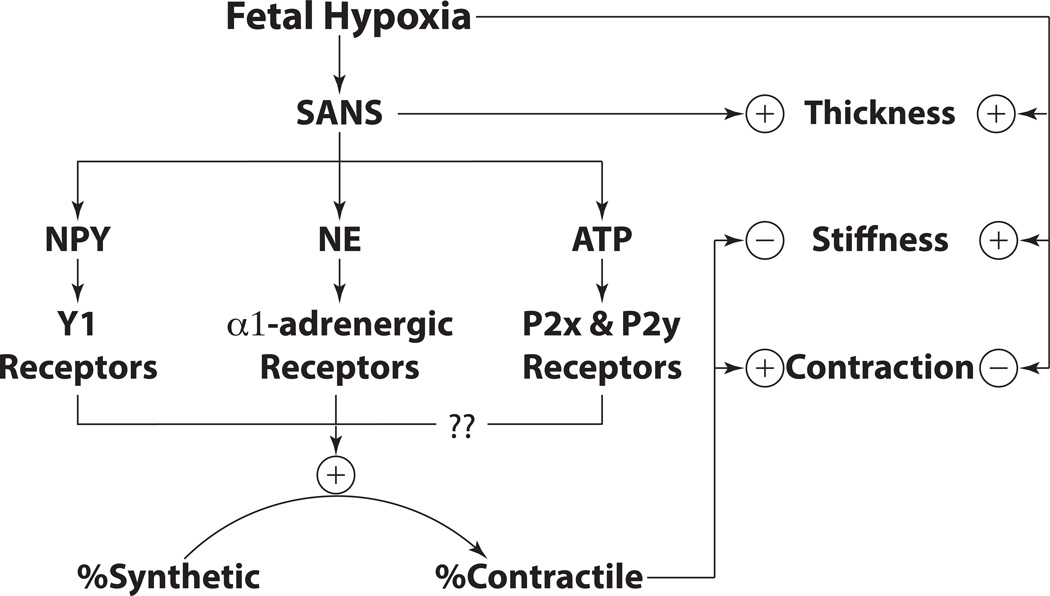Figure 5. Overview Schematic.
Hypoxic acclimatization induces the release of trophic factors such as VEGF, which stimulates growth and expansion of the sympathetic perivascular innervation. These nerves, in turn release NE, NPY and ATP, all of which act through their respective receptors to promote contractile differentiation of smooth muscle. These phenotypic changes enhance contractility but depress stiffness, as shown by denervation experiments. Independent of the sympathetic nerves, hypoxia can increase wall thickness and stiffness while also depressing contractility. Owing to these opposing effects, the final influence of hypoxia on artery structure and function depends on the balance between nerve-dependent and nerve-independent mechanisms.

